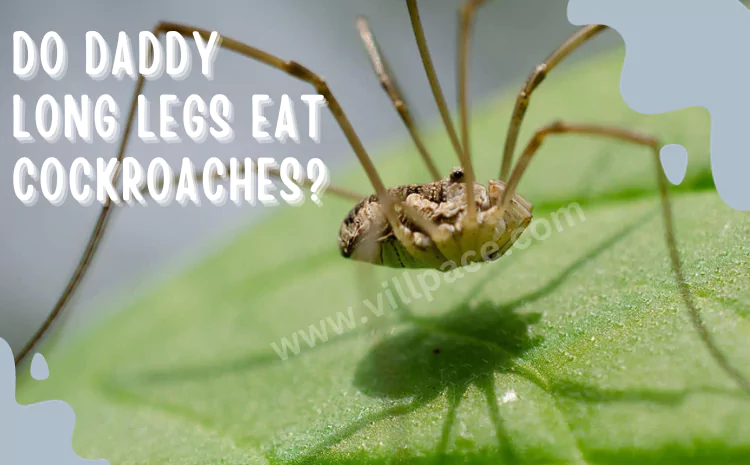Have you ever wondered if daddy long legs eat cockroaches? These long-legged creatures, often mistaken for spiders, have piqued the curiosity of many. In this article, we will explore whether daddy long legs feed on cockroaches and provide insights into their diet and behavior.
Key Takeaways
- Daddy long legs are often confused with spiders but belong to a different group.
- They do feed on insects, including other spiders.
- Their ability to eat cockroaches depends on the species and availability of prey.
- Daddy long legs are harmless to humans and do not bite.
Understanding Daddy Long Legs
To understand if daddy long legs eat cockroaches, it’s essential to know more about these creatures. Daddy long legs, also known as harvestmen, belong to the order Opiliones. Unlike spiders, they have a fused body segment and only two eyes.
Are Daddy Long Legs Spiders?
No, daddy long legs are not true spiders. Although they belong to the arachnid family, they differ in several key ways:
- Body Structure: Unlike spiders, daddy long legs have a fused body segment.
- Eyes: They typically have two eyes, while most spiders have eight.
- Silk Production: Daddy long legs do not produce silk.
Diet of Daddy Long Legs
What Do Daddy Long Legs Eat?
Daddy long legs are opportunistic feeders. Their diet mainly consists of:
- Insects: Including small insects and larvae.
- Other Arachnids: They may feed on other spiders and mites.
- Plant Matter: Occasionally, they consume decaying plant material.
Do Daddy Long Legs Eat Cockroaches?
Daddy long legs do eat cockroaches, but it’s not their primary food source. They may feed on cockroach nymphs or smaller, weakened roaches. Their ability to hunt cockroaches depends on several factors:
- Size: Smaller daddy long legs can target smaller prey.
- Opportunity: They eat what is available, including cockroaches, if they encounter them.
Table of Common Prey
| Prey Type | Description |
|---|---|
| Small Insects | Includes flies, beetles, and ants. |
| Other Spiders | Often prey on smaller spider species. |
| Mites | Feed on various types of mites. |
| Cockroach Nymphs | May consume young or weakened cockroaches. |
| Plant Matter | Occasionally eat decaying plant material. |
Behavior of Daddy Long Legs
How Do Daddy Long Legs Hunt?
Daddy long legs are not active hunters like spiders. They rely on their long legs to sense vibrations and locate prey. Their hunting behavior includes:
- Ambush: They wait for prey to come close before striking.
- Scavenging: Often feed on dead or decaying insects.
Are They Dangerous to Humans?
No, daddy long legs are harmless to humans. They lack venom glands and fangs capable of penetrating human skin. Myths about their venom potency are unfounded.
Table of Characteristics
| Characteristic | Description |
|---|---|
| Venom | Non-venomous and harmless to humans. |
| Hunting Style | Ambush and scavenging. |
| Diet | Opportunistic feeders, eating insects and plant matter. |
| Habitat | Found in moist environments, such as under logs and rocks. |
Comparison with Spiders
While daddy long legs are often mistaken for spiders, there are notable differences:
| Feature | Daddy Long Legs | Spiders |
|---|---|---|
| Body Segments | Fused body segment | Two distinct body segments |
| Eyes | Usually two eyes | Typically eight eyes |
| Silk Production | Do not produce silk | Produce silk for webs, egg sacs, and other purposes |
| Venom | Non-venomous | Many species have venom for hunting and defense |
Misconceptions and Myths
There are several myths surrounding daddy long legs. Let’s clarify some of these:
Myth: Daddy Long Legs Are Highly Venomous
Fact: Daddy long legs are not venomous. They do not have venom glands or fangs capable of delivering venom.
Myth: Daddy Long Legs Are Spiders
Fact: While they are arachnids, daddy long legs are not true spiders. They belong to a different order.
Myth: Daddy Long Legs Are Dangerous to Humans
Fact: They are harmless to humans and do not pose any danger.
Final Thoughts
Daddy long legs are fascinating creatures with unique behaviors and dietary habits. While they can feed on cockroaches, it is not their primary food source. Understanding their diet and behavior helps debunk myths and provides a clearer picture of these harmless arachnids.

Mark Thompson, a seasoned pest controller, is renowned for his expertise in keeping homes and businesses free from unwanted intruders. With a passion for environmental sustainability and a deep understanding of pest behavior, Mark has become a trusted authority in the industry.
